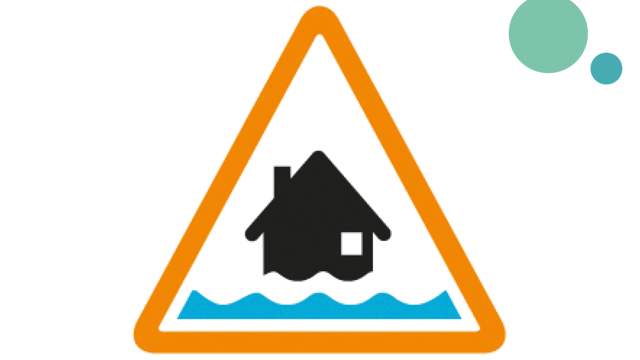If flooding occurs – we're here to help and our teams will support residents during and after the event.
-

Floods
We monitor flood levels in every area where we have homes and get direct updates from the Environment Agency if they are at risk.

flood alert - be prepared
This means that flooding is possible
If you get this alert you should:
- prepare a bag that includes medicines and insurance documents
- regularly check the flood warnings
- put out any personal safety measures you have such as sandbags or floodgates
- alert as many of your neighbours as possib

flood warning - act
This means that flooding is expected and immediate action is required
If you get this alert you should:
- move your belongings upstairs or to safety
- move family, pets and vehicles to safety
- put out any personal safety measures you have such as sandbags or floodgates

severe flood - warning survive
This means that there will be severe flooding and this is a danger to life
If you get this alert you should:
- call 999 if you are in immediate danger
- follow advice from the Emergency Services
- keep yourself and your family safe
Remember -All floods are different. You should take advice from the Emergency Services and your Local Authority if you are affected by flooding in your local area.
What we will do
We monitor flood alerts and warnings. If we receive a notification that an area where we own homes is at risk or affected, we follow our flood procedure:

Flood alert - prepare
We will be alerted and our colleagues will visit the area affected and check river levels, paths and gulleys. We may knock on customers doors if we can, advising residents of the flood alert and how to prepare.
Our colleagues will keep in regular contact with each other and our customers to ensure we take action if needed.

Flood warning - act
When a flood warning is in place, we activate our Major Incident Planning Process. This means that our executive team, senior managers and local teams will take action.
Where possible, our teams will attend to support residents. However, no two floods are the same; if the flood occurs quickly following the warning, our colleagues may not be able to attend and support. The area will be cordoned off and your Local Authority and the Emergency Services will take over managing the situation.
-

Flood care
What happens after a flood
If you have been evacuated due to flooding, the Emergency Services and your Local Authority will let us know when it is safe for you to return.
As soon as we can safely access the property, we will assess the area and come up with a clean-up plan.
We are responsible for the building, so if your home has been affected by a flood, we will assess the damage and book any repairs that we are responsible for fixing. We will also help to remove any damaged items.
You are responsible for the contents and will be able to claim for any damage to your possessions through your home contents insurance.
What you can do
-

Flood warnings
Be alert
The Environment Agency are responsible for alerting people to flood warnings.
You can sign up to receive free alerts by text, email, or phone. If you live in an area which is prone to flooding, we strongly advise that you do this.
In the event of a flood, you can access information on the government website here
-

Flood care
How to reduce flood damage
We can’t always stop flooding, but there are steps you can take to reduce the damage it causes.
If you live in an area prone to flooding, we encourage you to fit floodgates. We may be able to help install them if you are struggling. We also recommend that you keep sandbags or hydrosnakes handy so you can quickly protect your home if you need to. You can buy all these online.
Sandbags, hydrosnakes and floodgates will delay water from getting into your home but may not stop it altogether. You should take out home contents insurance against your personal possessions – you can find out more about a policy created for social housing tenants here.
